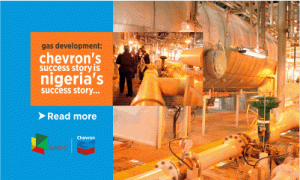The Nigerian National Petroleum Corporation (NNPC) is now stocked between two challenges.
Details from OPEC report, released weekend said Nigeria’s crude oil production has consistently increased from the 1.511 million bpd in first quarter of this year; 1.616 million bpd in second quarter to 1.710 mpbd in June and 1.723mbpd in July.Whereas the first is cutting short the joy of eased hostilities which is encouraging growing crude oil productivity, the second is the fear of Organisation of the Petroleum Exporting Countries (OPEC) in delisting Nigeria from cut restrictions earlier imposed on other member states to push up global oil prices.
However, the Minister of State for Petroleum Resources, Dr. Ibe Kachukwu had late last week averred that Nigeria will resist any cut should OPEC goes ahead to remove Nigeria from the list of countries allowed to exceed limit due to vandalism in their production communities.
Nigeria since three months ago has hit daily production output of about 1.87mbpd, which is against the allowed 1.8mbpd.
Experts say there are fears that next OPEC meeting coming before the end of the month may upturn the joy of the nation and the development may further delay chances of early recovery from the exited recession as the economy is still driven by oil earnings.
Otherwise, crude oil production freeze is now imminent for Nigeria, as the country’s oil production increased by 138,300 barrels per day (bpd) from the 1.723 million (bpd in July to 1.861million bpd, according to the latest report from OPEC.
This has made the country to exceed its allocated crude oil production level by the Joint Organisation of OPEC-Non-OPEC Technical Committee (JTC), which would necessitate a cap in crude oil output.
Business Hilights recalls that the Joint Organisation of OPEC-Non-OPEC Technical Committee (JTC), had welcomed the flexibility of Nigeria in freezing crude oil output, which, despite its commitment to recover its pre-crisis production level, voluntarily agreed to implement similar OPEC production adjustments as soon as its recovery reaches a sustainable production volume of 1.8 mbpd.
OPEC explained that total its total crude oil production averaged 32.76 mbpd in August, a decrease of 79,000 bpd over the previous month. It noted that crude oil output increased in Nigeria, while production showed declines in Libya, Gabon,Venezuela and Iraq.
According to OPEC, “Booming refinery profits are helping West African oil producers to sell cargoes at higher prices, aided by a shortage in certain types of crude amid OPEC production adjustments and geopolitical turbulence”.
“Continuing improvements in price differentials, coupled with an uplift in crude benchmark Brent outright prices, supported light sweet crude Basket components from West and North Africa to prices above $50/b. Saharan Blend, Es Sider, Girassol, Bonny Light, Equatorial Guinea’s Zafiro and Gabon’s Rabi values increased by $3.32 per barrel on average, or 6.9 per cent, to $51.33 per barrel. Physical crude differentials for these grades improved on higher demand from Asia, particularly China and India.”
Currently, world oil demand growth in 2017 is expected to rise by 1.42 mbpd after an upward revision of around 50 tbpd. In 2018, world oil demand is anticipated to grow by 1.35 mbpd, an increase of 70 tbpd from the previous report.
The cartel had made it clear that refinery margins in the Atlantic Basin strengthened in August. “In the US, margins rose amid expectations for a product supply shortfall in the wake of Hurricane Harvey, coupled with already firm domestic demand, which supported product crack spreads”.









